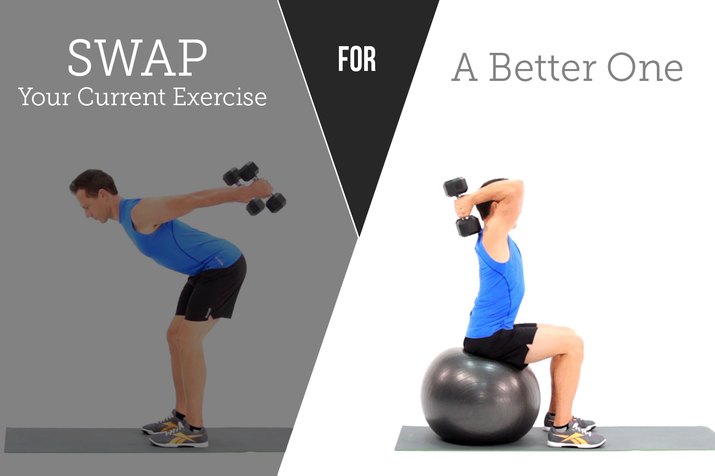
Overview
The old saying, "Insanity is doing the same thing over and over and expecting a different result" also pertains to your workouts. Over time, your muscles adapt to the same old routine. That means you can get better gains from changing things up. Switching out one exercise for another that targets the same muscle group but activates slightly different parts of that muscle is a good way to round out your results and sculpt the arms and chest you're aiming for. If you've been going through your upper body workout on autopilot, it may be time to shake things up. Start with these expert-recommended swaps.

1. SWAP OUT: Traditional Biceps Curls FOR: Hammer Curls
In a traditional bicep curl, arms are supinated (palms face forward), so the biceps brachii are highly activated, says Shannan Lynch, Ph.D., vice president of operations at Out-Fit Fitness Solutions. "In the hammer curl, your arms are in a neutral position so the brachioradialis (a forearm muscle) and the brachialis (lies underneath the biceps brachii) are highly activated and act as the primary elbow flexors to achieve the exercise." The brachialis is a predominately fast-twitch muscle, so it's a great exercise for those heavy-weight, lower-rep arm days when you're focusing on isolation exercises.
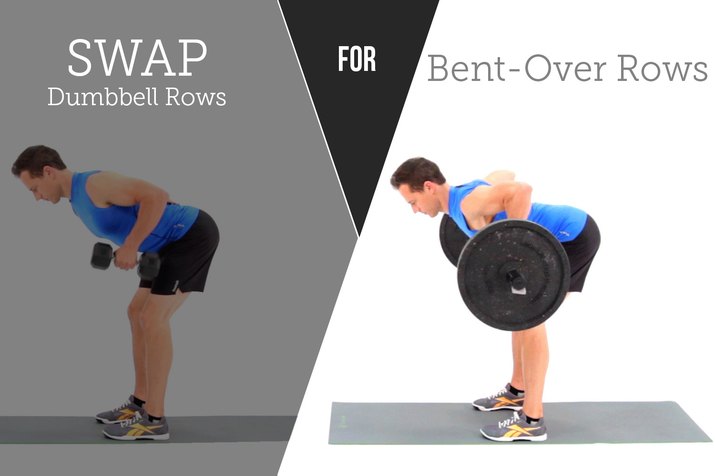
2. SWAP OUT: Dumbbell Rows FOR: Bent-Over Rows
Traditional one-arm dumbbell rows, whether single or double-armed, require equal amounts of work from both arms, rhomboids, mid traps and rear deltoids, says certified strength and condition coach Shannan Lynch. "Therefore, if you are weaker on one side it may feel heavier on that side. Bent-over rows with a barbell work the same muscles, but requires more trunk stabilization." The reason: The spine is more flexed and you perform the exercise with both hands on the bar, so you'll be able to lift a heavier load compared to unilateral loads. "Bent-over rows are a great exercise if you want to combine the movement with a bent-knee deadlift, too," says Lynch.
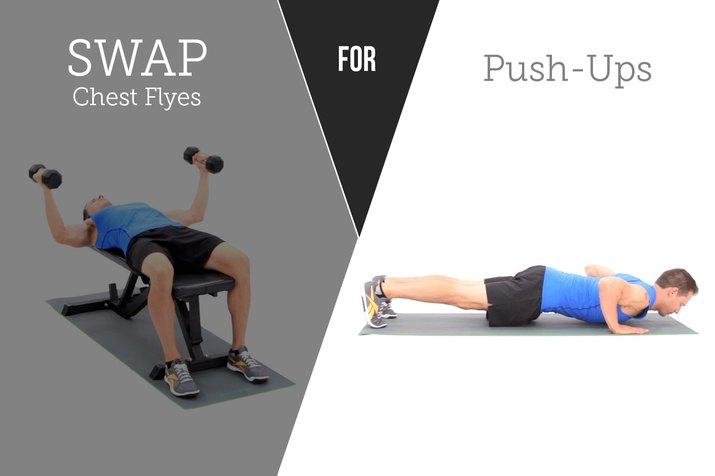
3. SWAP OUT: Chest Flyes FOR: Push-Ups
While exercises like chest flyes and cable crossovers are great for eliciting a high degree of muscle activation in the pectoralis major -- the primary muscles of the chest -- push-ups are a more functional exercise that effectively train one of the body's five primary movement patterns, says Jessica Matthews, senior advisor for health and fitness education for the American Council on Exercise (ACE). And you'll use this movement pattern during everyday activities like pushing a shopping cart or tossing a ball around in the yard with the kids. Functional activities involve different muscle groups working together in an integrated manner as opposed to working in isolation. "Since the push-up is a compound exercise, it not only works the pectoralis major, but it also utilizes a number of other muscles to either assist with the movement-- such as the triceps brachii-- or to stabilize the body against gravity, such as the abdominals, during the exercise."

4. SWAP OUT: Triceps Extensions FOR: Skull Crusher
Triceps machines come in a few designs, but they all possess a similar trait -- it's a closed-chain exercise, says certified strength and conditioning coach Shannan Lynch. "This means your hands are fixed to a surface (i.e., handle bars that are attached to a stationary machine). Closed-chain exercises typically provide more stabilization to the moving joints." But that added stabilization from the machine means you're not challenging supporting muscles as effectively as you could be. Don't let the name scare you. Done properly a skull crusher is no more dangerous than any other triceps exercise. You perform a skull crusher lying on your back, taking the load off the spine, says Lynch. "And the movement demands stabilization from your rotator cuff and even your serratus (rib) muscles."

5. SWAP OUT: Triceps Kickbacks FOR: Overhead Triceps Extensions
Both exercises are great triceps options, but achieving perfect form on kickbacks can be difficult for some people. "Proper form is crucial for not only effectively targeting the triceps, but for also preventing additional loading on the spine," says ACE advisor Jessica Matthews. Switching to an overhead extension may be easier to perfect. Sit on a stability ball or bench and hold a dumbbell with both hands wrapped around the handle. Slowly press the dumbbell overhead by straightening your elbows until the weight is positioned directly overhead with palms facing upwards and the dumbbells hangs vertically from your palms. Bend your elbows to lower the weight and return it to starting position.
Related: 9 TRX Exercises to Sculpt an Insanely Strong Upper Body
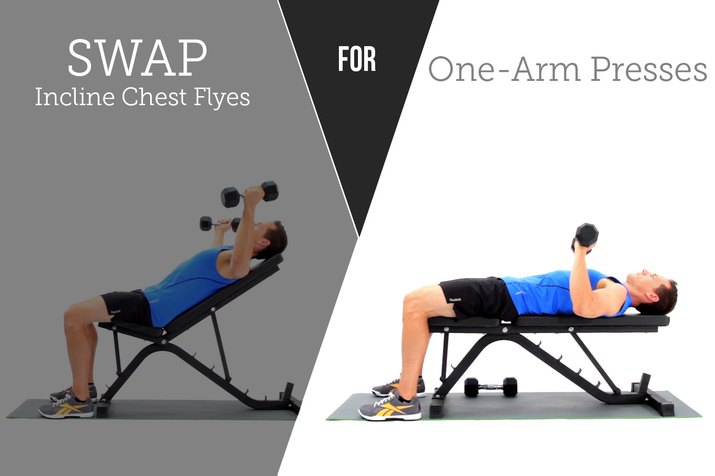
6. SWAP OUT: Incline Chest Flyes FOR: One-Armed Dumbbell Press
In general, one-armed exercises require more balance and, therefore, more core activation than two-armed exercises. They also help strengthen the weaker arm, since most people have a dominant side that compensates for by the weaker side in a bilateral exercise. Incline chest flyes uses the pectoralis major and anterior deltoid muscle while the one-arm press involves the pecs, anterior delts (rear shoulder) and triceps, says Pete McCall, a personal trainer based in San Diego. Want to amp it up even more? "A standing one-arm press with a cable would be better [than lying on a bench] as it uses the spinal stabilizers to maintain stability while the arm is pressing the weight," he says. "It also uses more muscles and, therefore, burns more calories."
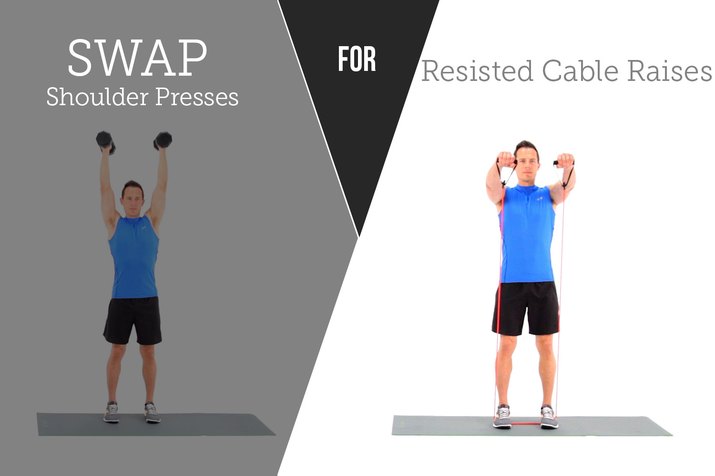
7. SWAP OUT: Dumbbell Shoulder Presses FOR: Resisted Cable Raises
Overhead shoulder presses puts stress on the shoulder joint, making it painful for some people, says personal trainer Pete McCall. "The band pull uses primarily posterior muscles -- deltoids and triceps. This helps extend the humerus and places less stress on the glenohumeral joint." So this switch is particularly appropriate if someone has shoulder pain when pressing overhead, he says.
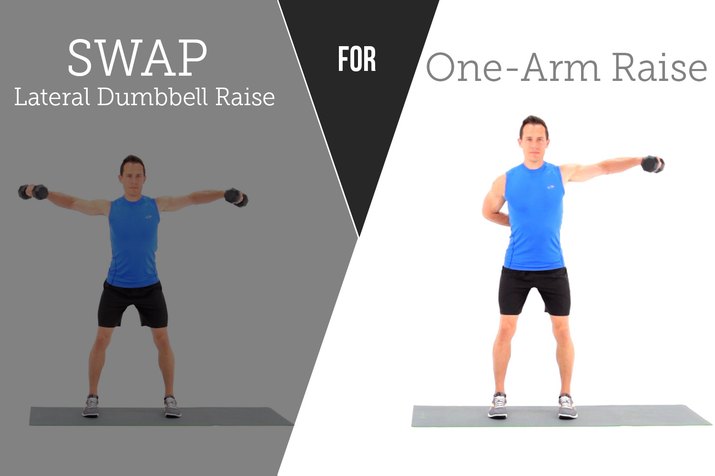
8. SWAP OUT: Lateral Raises FOR: One-Arm Lateral Raise
Lateral raises primarily work the deltoids (shoulders), but switching the exercise from a double-arm raise to a single-arm raise involves your obliques and challenges your core stability. In addition, the single-arm movement allows you to work each arm independently, strengthening the weaker side.
Related: 12 Cable-Machine Moves That Build Muscle and Torch Calories
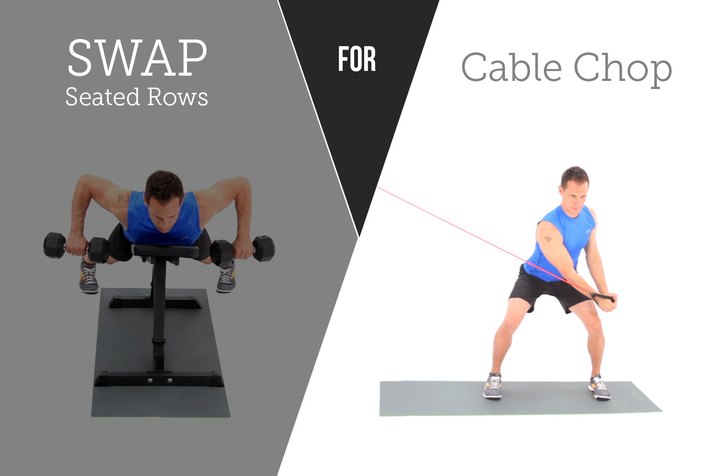
9. SWAP OUT: Seated Rows FOR: Resisted Cable Chop
Using one side at a time in this chop variation allows for a greater amount of weight to be used on each arm. "Heavier loads (higher weight) can create more mechanical stress on tissue as well as a greater metabolic impact (the muscle creating the energy for contraction)." Both metabolic and mechanical stress are essential for developing muscle size and strength.
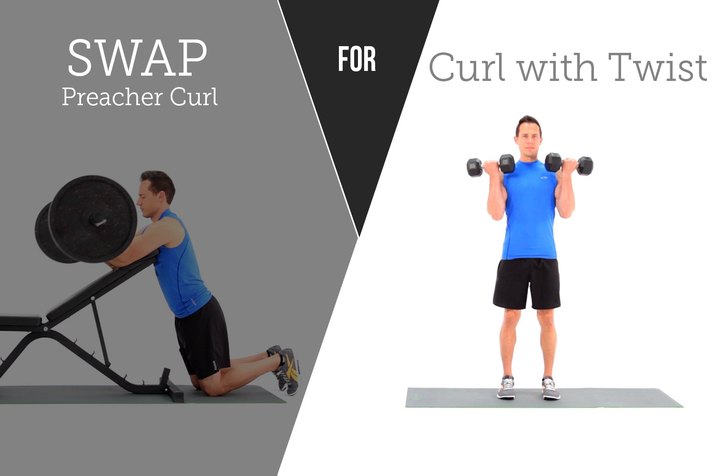
10. SWAP OUT: Preacher Curls FOR: Biceps Curls With Twist
Although they're an effective biceps move, preacher curls use only one primary muscle -- biceps brachii -- to move the elbow joint in flexion, says personal trainer Pete McCall. Adding a twist to traditional biceps curls (starting with the hands turned in toward the body and finishing with the hand facing the chest) uses the brachialis and radiobrachialis muscles (which connect from the radius to the humerus) to help rotate the forearm. "This extra rotation can involve the smaller muscles," says McCall. "When they increase in strength and size, they can give the appearance of a stronger, fitter arm."
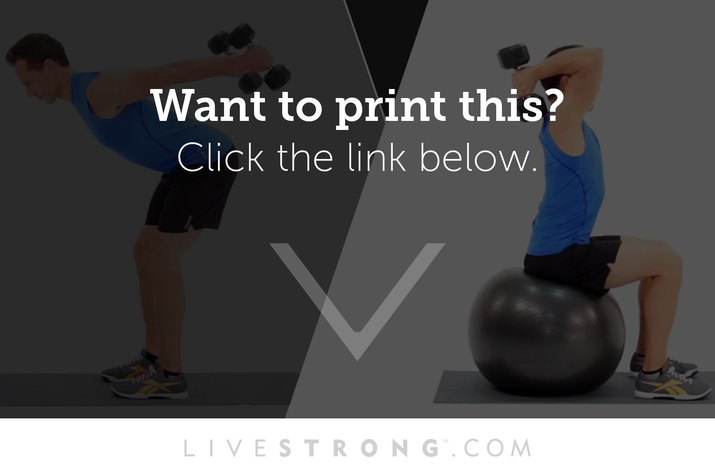
Print or Pin This Article
Click the link below for a printable version of the "10 Upper-Body Exercise Swaps to Amp Up Results."
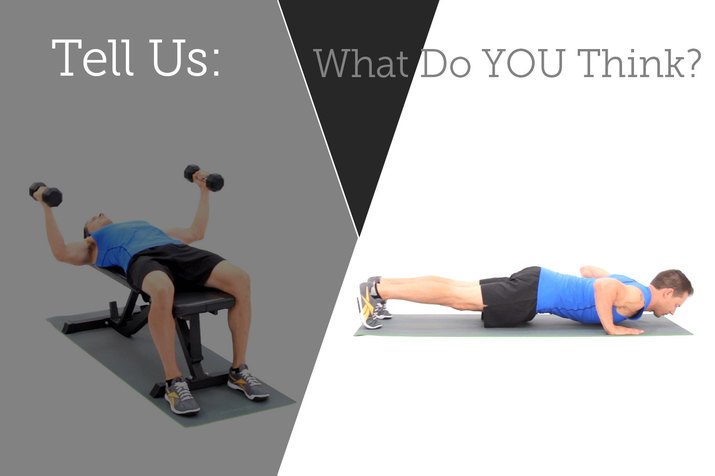
What Do YOU Think?
Which exercises will you swap out this week? Did any of these suggestions inspire you to switch up your routine? What are some of your other favorite exercise swaps? Try one of these switches and share your thoughts in the comments section below!
Video of the Day
Video of the Day